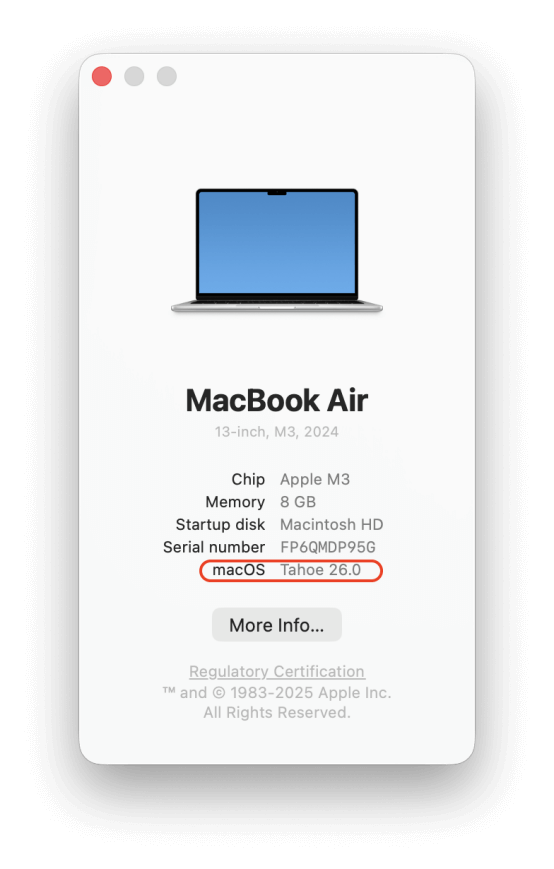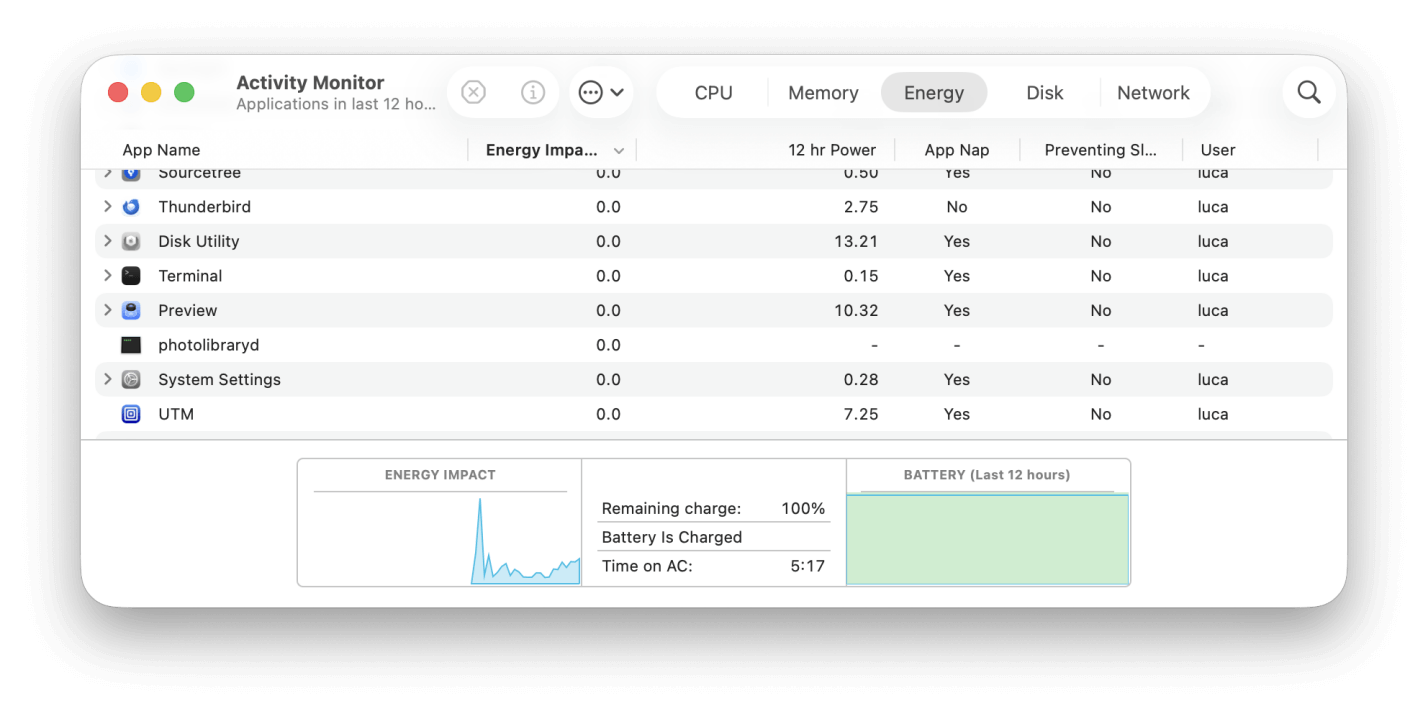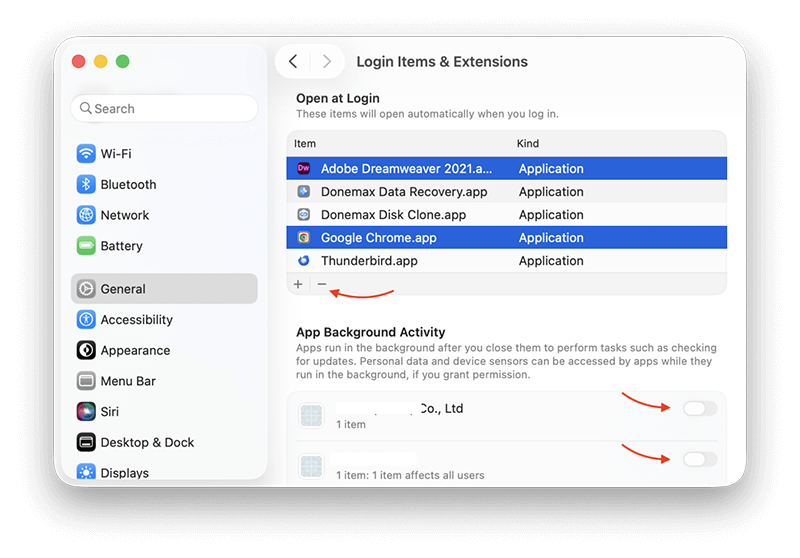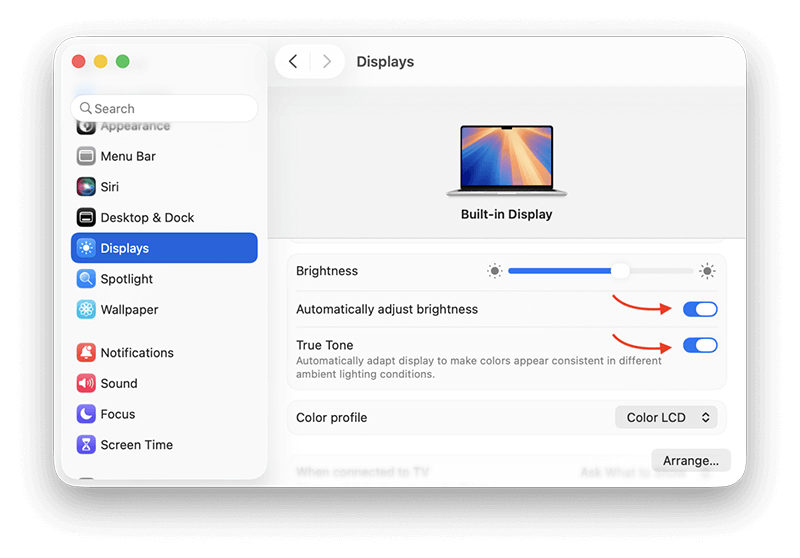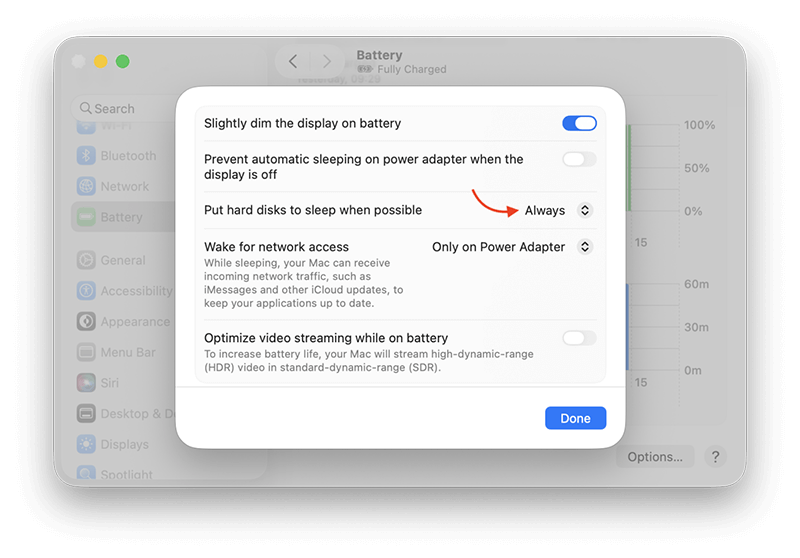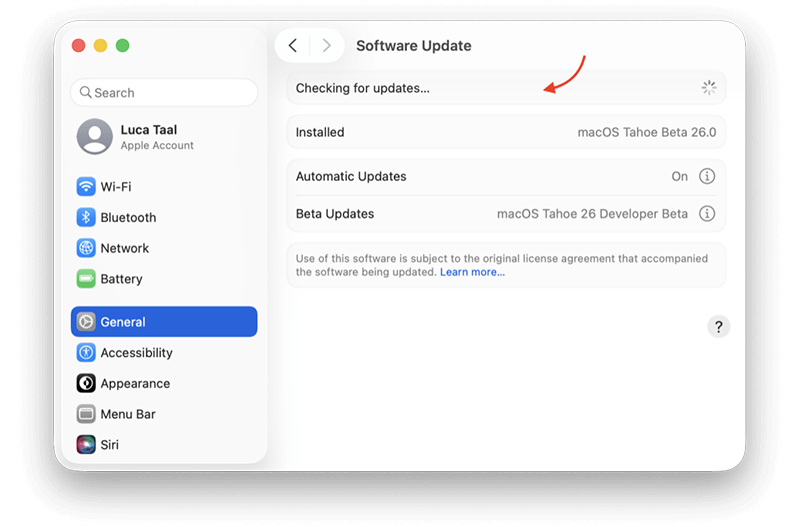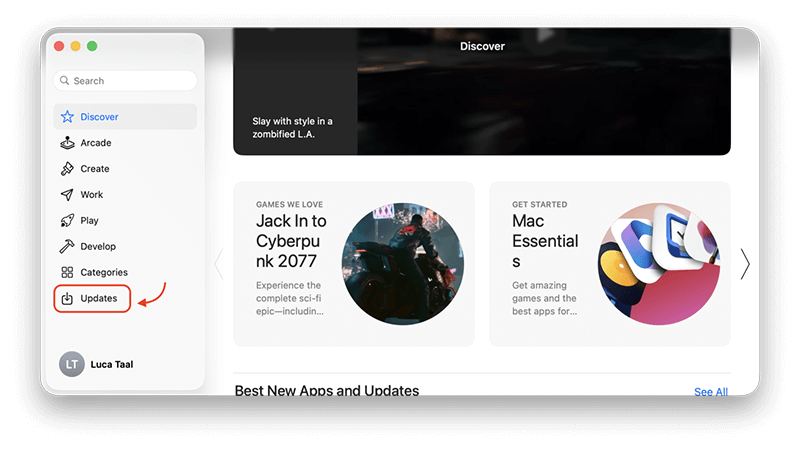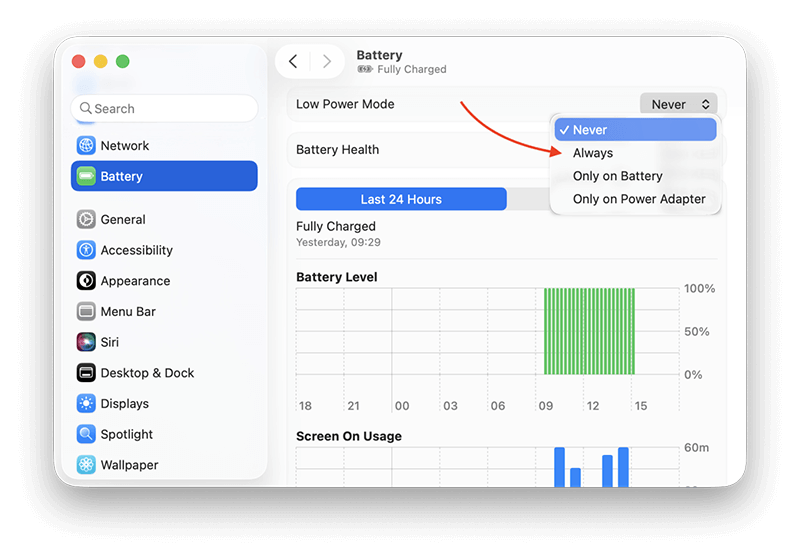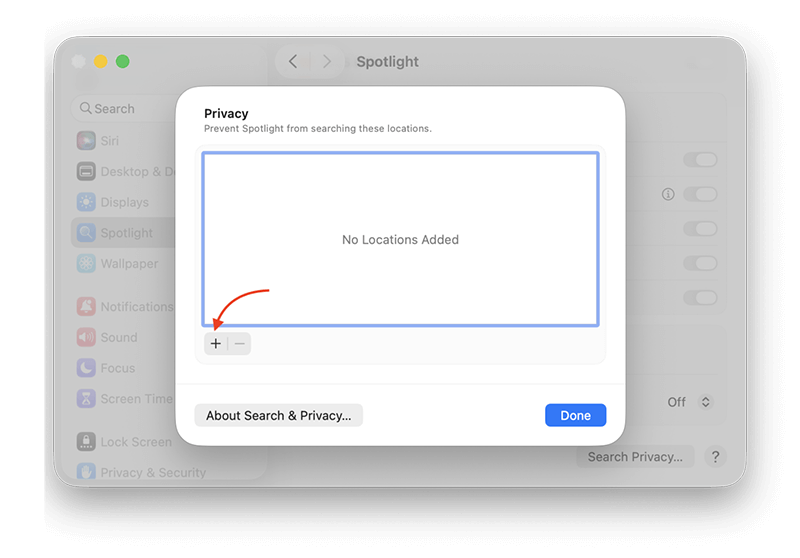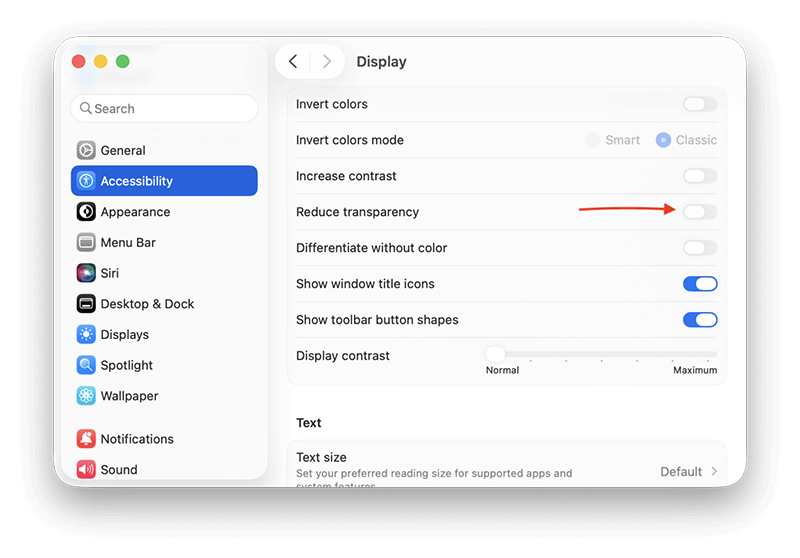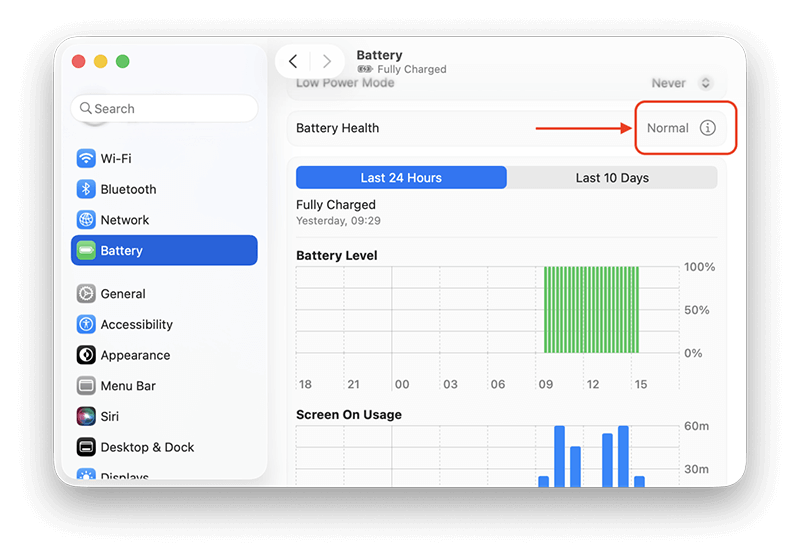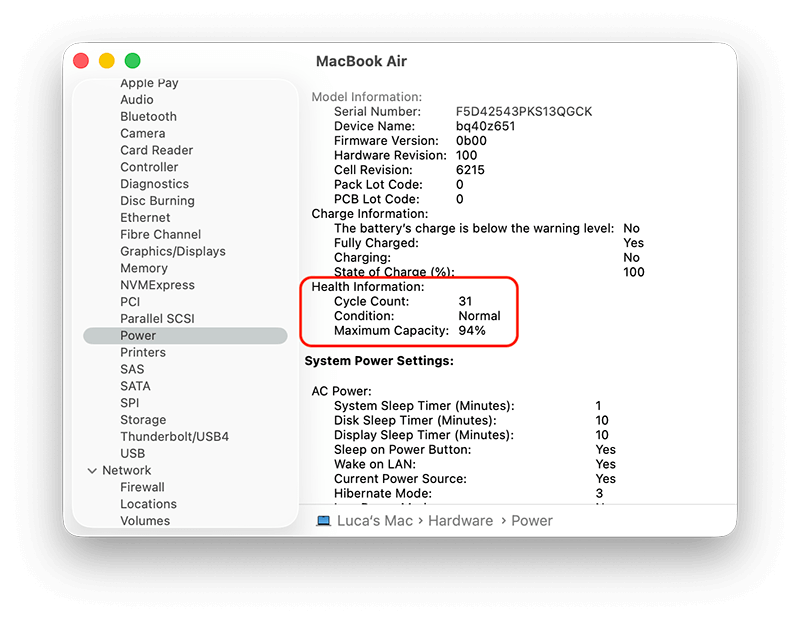Before we start: If there are issues with battery after upgrading to macOS Tahoe, you can follow the guide to fix the issue. Also, you can use Donemax DMcleaner for Mac to cleanup and optimize your macOS Tahoe.
PAGE CONTENT:
The release of macOS Tahoe introduced several exciting features and system optimizations. However, not all users have had a smooth experience. One of the most common complaints after upgrading is excessive battery drain on macOS Tahoe. This problem not only affects daily productivity but also raises concerns about long-term battery health.
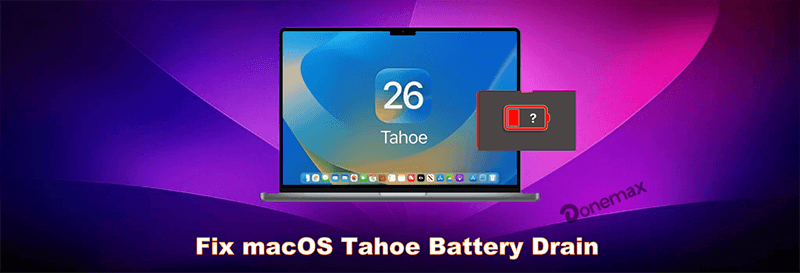
If your MacBook battery is depleting faster than expected after installing macOS Tahoe, don't worry - there are multiple ways to fix macOS Tahoe battery drain. This comprehensive guide will walk you through 15 effective solutions to identify the cause and optimize your battery life.
15 Methods to Fix macOS Tahoe 26 Battery Drain
Fix 1. Check macOS Version and Battery Trends
Before diving into solutions, make sure you're actually running macOS Tahoe:
- Go to Apple Menu > About This Mac
- Confirm "macOS Tahoe" is listed with the latest version number
![Check macOS Version]()
Also, check battery usage patterns:
- Go to System Settings > Battery
- Look for any spikes or unusual activity over the last 24 hours or 10 days
![Check Battery Trends]()
Fix 2. Use Activity Monitor to Identify Power-Hungry Apps
When your MacBook's battery drains unusually fast, one of the first places to check is the Activity Monitor. This built-in utility shows all running processes and how much energy or CPU each one is using in real time. It's like macOS's version of Task Manager on Windows.
How to Open Activity Monitor:
- Click on Apps > Activity Monitor OR press Command + Space, type Activity Monitor, and press Enter.
- Once it opens, navigate to the Energy tab (at the top center of the window).
![How to Open Activity Monitor]()
Here's what each key column means:
- App Name: The application or process currently running.
- Energy Impact: The current energy consumption (higher = worse).
- App Nap: Shows whether macOS is throttling the app in the background.
- Preventing Sleep: Indicates if the app is keeping your Mac awake.
What to Look For:
- Apps with high "Energy Impact". These should be closed or monitored closely.
- Background services like Dropbox, Google Drive, OneDrive, or Microsoft Teams often consume more power than you expect.
- Sometimes, Safari or Google Chrome tabs - even idle ones - can be responsible for 20–30% of battery usage due to animations, ads, or JavaScript-heavy pages.
Pro Tips:
- Sort the list by Energy Impact to see the biggest battery drainers.
- If you find a third-party app you don't recognize or need, consider uninstalling it.
- Apps like Creative Cloud, Zoom, and Spotify often run services in the background - disable or exit them when not needed.
- Mail App and other syncing tools may repeatedly fetch data and consume energy.
Example Scenario:
You open Activity Monitor and notice:
- Google Chrome: 25 Energy Impact
- Dropbox: 18 Energy Impact
- mds_stores: 12 Energy Impact
This tells you:
- Chrome tabs/extensions are consuming a lot of power.
- Dropbox syncing may be aggressive (especially after reinstall or OS upgrade).
- mds_stores is part of Spotlight indexing (a temporary but common drain after macOS upgrades like Tahoe).
Recommended Actions:
- Close unnecessary browser tabs and remove heavy extensions.
- Pause or quit cloud sync apps when you're running on battery.
- If Spotlight (mds, mds_stores) is draining power for hours, reindexing may be stuck (see Fix 11).
Fix 3. Disable Unnecessary Startup and Login Items
macOS allows apps to launch during startup, but too many can drain your battery:
- Go to System Settings > General > Login Items & Extensions
- Remove unnecessary apps (especially third-party utilities)
- Toggle off "App Background Activity" for apps you rarely use
![Disable Unnecessary Startup and Login Items]()
Reducing background processes directly improves battery efficiency.
Fix 4. Adjust Display and Energy Preferences
Your MacBook's screen is one of the biggest power consumers. Optimize these settings:
- Go to System Settings > Displays to tweak display options
- Lower screen brightness manually or toggle Auto adjust rightness
- Disable True Tone if available
![Disable True Tone if available]()
- Set shorter sleep times under Battery > Options
![Set shorter sleep times under Battery > Options]()
Fix 5. Keep macOS and Apps Up to Date
Outdated software often causes performance or battery issues. Developers frequently release patches to improve efficiency:
- Open System Settings > General > Software Update. Install all pending macOS updates
![Keep macOS and Apps Up to Date]()
- Open App Store > Updates to update apps
![Keep macOS and Apps Up to Date]()
Many post-release issues with macOS Tahoe may have already been patched.
Fix 6. Turn Off Bluetooth and Location When Not in Use
Leaving Bluetooth or Location Services on all the time uses unnecessary battery:
- Go to System Settings > Bluetooth, toggle it off if no device is paired
![Turn Off Bluetooth and Location When Not in Use]()
- Navigate to Privacy & Security > Location Services, and disable for apps that don't need it
![Turn Off Bluetooth and Location When Not in Use]()
Bonus: Turn off Wi-Fi when offline for even more power savings.
Fix 7. Reset SMC and NVRAM (Intel-Based Macs Only)
For Intel MacBooks, resetting SMC (System Management Controller) and NVRAM can resolve power-related glitches:
Resetting SMC:
- Turn Off your Mac
- For ten seconds, press Shift + Control + Option + Power.
- Turn on the Mac after releasing all the keys.
Resetting NVRAM:
- Hold Option + Command + P + R after restarting the Mac.
- Hold for another 20 seconds.
- Let go and let it to boot up normally.
For Apple Silicon Macs, these resets happen automatically on reboot.
Fix 8. Limit Background App Refresh and Notifications
Apps that refresh content in the background—even when not in use—consume CPU cycles and battery:
- Go to System Settings > General > Login Items & Extensions > App Background Activity
- Disable this feature for non-essential apps
Also, silence frequent notifications that keep the screen waking up:
- Navigate to System Settings > Notifications
- Toggle off notifications for apps like Slack, Mail, or social media
![Limit Background App Refresh and Notifications]()
Fix 9. Scan for Rogue Processes and Malware
Some background tasks may not be legitimate. Hidden malware or rogue scripts can silently drain battery:
- Use Activity Monitor to detect unknown or persistent background activity
- Consider running a scan using Malwarebytes for Mac, a reputable anti-malware tool
Although macOS has strong native security, malware infections aren't impossible, especially after a new OS launch.
Fix 10. Enable Low Power Mode
Low Power Mode is a built-in macOS feature designed to reduce energy consumption:
- Go to System Settings > Battery
- Enable Low Power Mode for battery or both battery and power adapter
![Enable Low Power Mode]()
It reduces system clock speed, disables background refresh, and limits visual effects. Ideal for travel or extended unplugged sessions.
Fix 11. Reindex Spotlight Search (If Recently Upgraded)
After a macOS update, Spotlight often reindexes your drive—a process that can last hours and cause battery drain:
- To verify: Open Activity Monitor and check for mds or mdworker processes consuming CPU
- The process is temporary and should resolve on its own
- If persistent, go to System Settings > Spotlight > Search Privacy. Add your disk, wait a minute, then remove it to trigger reindexing manually
![Reindex Spotlight Search]()
Fix 12. Disable Unused Visual Features
Fancy visual effects can look good but aren't battery friendly:
- Go to System Settings > Accessibility > Display
- Enable Reduce Transparency
![Disable Unused Visual Features]()
This reduces graphic load on the GPU and helps save power.
Fix 13. Check Battery Health and Cycle Count
If your MacBook is over a few years old, battery health degradation may be contributing to rapid drain:
- Go to System Settings > Battery > Battery Health
- Review battery condition: Normal, Service Recommended, or Replace Soon
![Check Battery Health and Cycle Count]()
- Also check Cycle Count (under System Information > Power)
![Check Battery Health and Cycle Count]()
A MacBook battery typically lasts around 1000 cycles. If you're near or over that, it might be time for a replacement.
Fix 14. Consider a Clean Install (Advanced Users)
If you've tried everything and battery drain persists, a clean install may help eliminate hidden conflicts or corruptions:
Steps:
- Backup your data via Time Machine or iCloud
- Create a bootable USB installer with macOS Tahoe
- Erase your disk via Disk Utility in Recovery Mode
- Reinstall macOS from the USB
⚠️Warning: This erases everything—ensure all important files are safely backed up.
Fix 15. Contact Apple Support or Visit a Genius Bar
If all else fails, you may be facing a hardware issue or firmware conflict. Reach out to Apple Support:
- Run Apple Diagnostics (hold D on boot)
- If diagnostics report battery issues, AppleCare+ may cover repairs or replacements
- Visit a nearby Genius Bar or authorized service center
Conclusion
Battery drain after a macOS update like Tahoe can be frustrating, especially on newer MacBooks. But most issues are software-related and fixable using the methods listed in this guide.
To recap the most impactful tips:
- Use Activity Monitor to detect power-hungry apps
- Adjust display brightness and settings
- Update all software and apps
- Enable Low Power Mode
- Reset SMC/NVRAM if applicable
- Review battery health and consider replacement if needed
With these steps, your MacBook should regain much of its battery efficiency and feel just as fast and reliable as it did before the update.
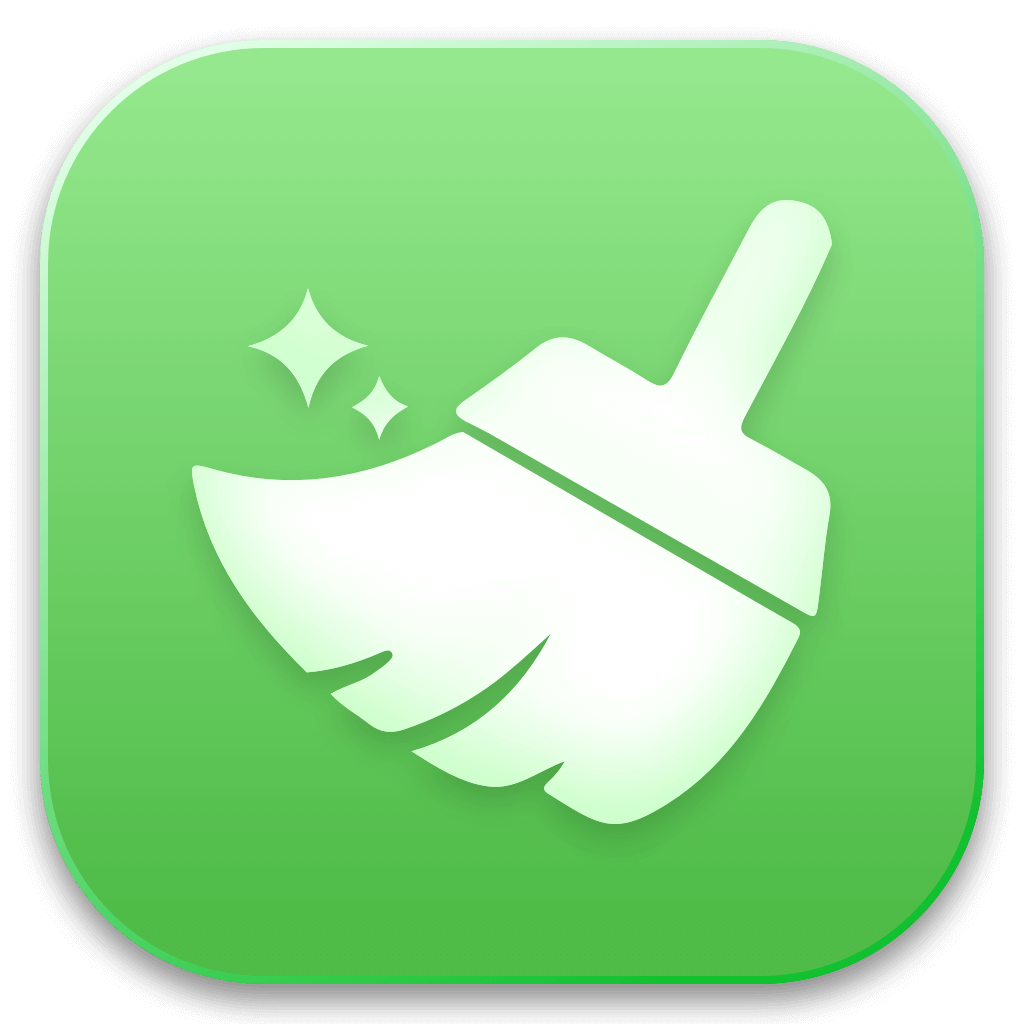

DMcleaner for Mac
Donemax DMcleaner for Mac is an award-winning Mac cleanup & maintenance application. It offers 10+ tools to help Mac users clean up junk data on Mac, uninstall unwanted apps & delete leftovers, shred files, delete duplicate files, free up disk space, speed up slow Mac, etc. It is also a smart switch manager for Mac, a powerful disk manager for Mac.
Related Articles
- Dec 21, 2024How to Delete Old Time Machine Backups?
- Dec 12, 2024How to Mount External Hard Drive or USB Drive Using Terminal on Mac?
- Jul 19, 2025How to Disable Startup Items/Programs on Mac? [4 Methods]
- Nov 13, 2024Clean Install macOS Mojave: The Guide for a Fresh Mac Experience
- Apr 18, 2025How to Fix MacBook Screen Flickering?
- Aug 21, 202513 Fixes to Fix Can't Open a PDF Document on Mac

Charles
Charles, who lives in Sydney, Australia, is an editor & writer of Donemax Team. He is good at writing articles related with Apple Mac computers, Windows operating systems, data recovery, data erasure, disk clone and data backup, etc. He loves reading and playing tennis in his spare time and is interested in testing new digital devices such as mobile phones, Macs, HDDs, SSDs, digital cameras, etc.

Gerhard Chou
In order to effectively solve the problems for our customers, every article and troubleshooting solution published on our website has been strictly tested and practiced. Our editors love researching and using computers and testing software, and are willing to help computer users with their problems
